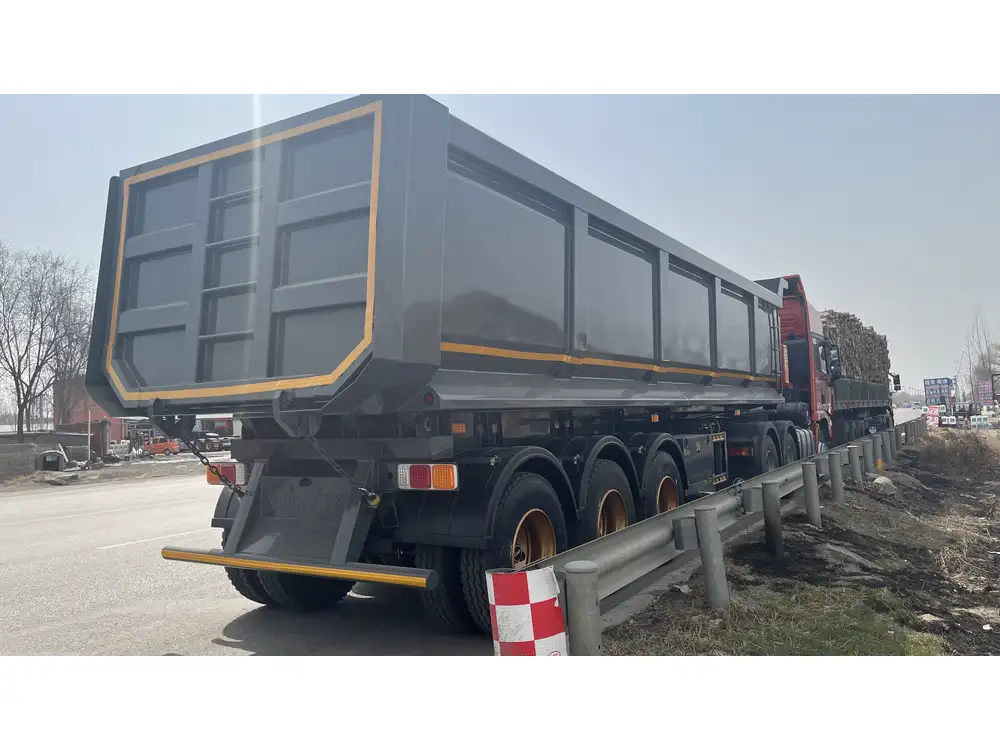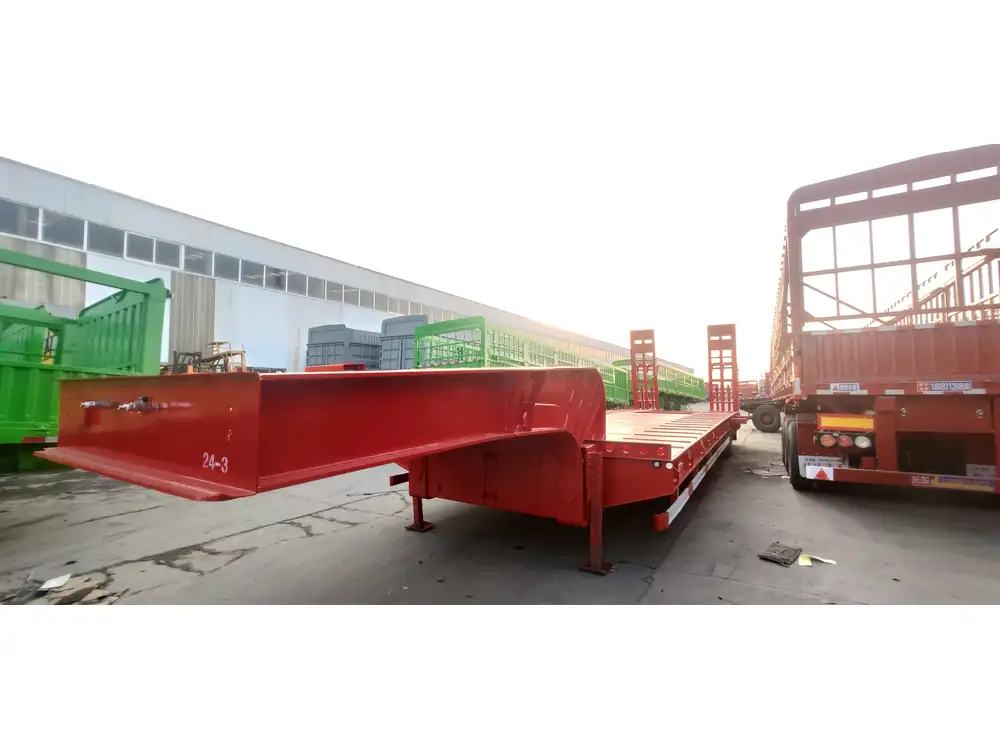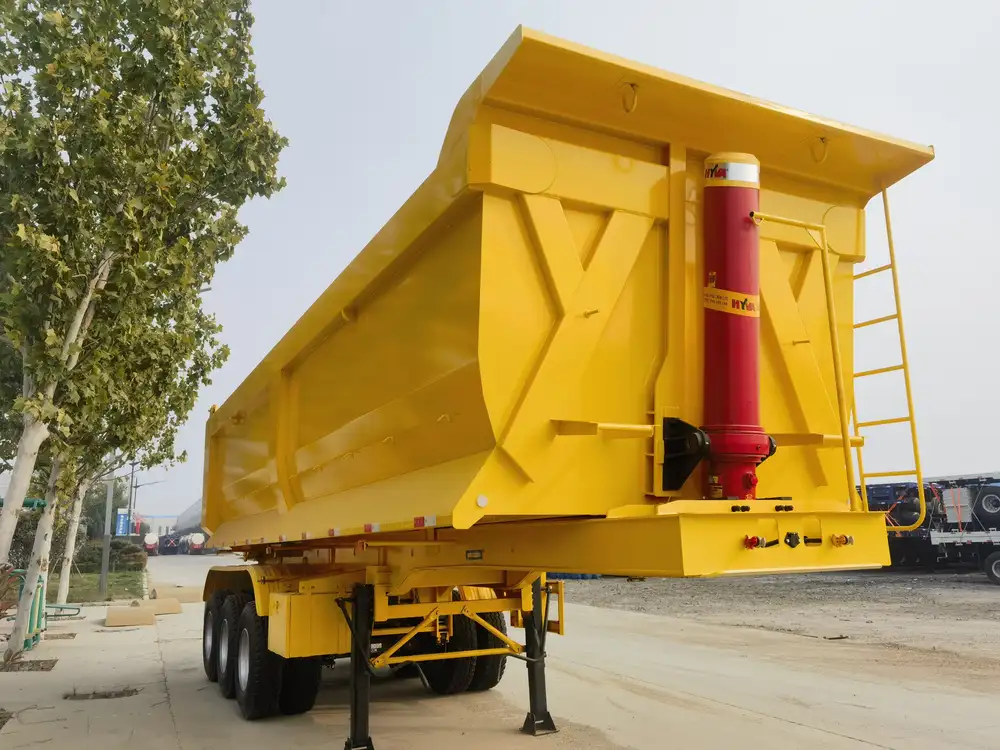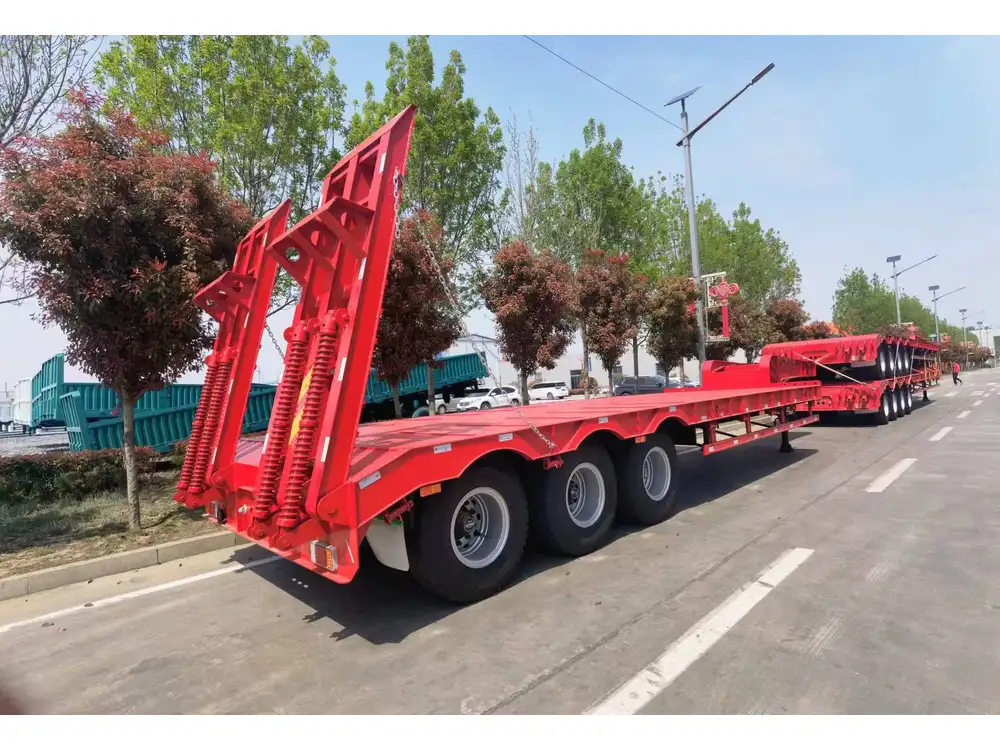Building a dump trailer involves intricate planning, precise engineering, and a substantial understanding of materials and manufacturing processes. This guide delves into the details of constructing a dump trailer, from selecting the best materials to ensuring compliance with safety regulations. By the end, you’ll be equipped with the knowledge to create a durable and efficient dump trailer that suits various hauling needs.
Understanding the Basics of a Dump Trailer
What is a Dump Trailer?
A dump trailer is a versatile piece of equipment designed to transport materials and unload them using a hydraulic lifting mechanism. Unlike standard trailers, dump trailers have a tilting bed that allows for easy unloading of materials, ranging from debris to loose soil. These trailers are commonly used in construction, landscaping, and agricultural settings due to their ability to simplify the loading and unloading process.

Types of Dump Trailers
Before embarking on the construction of a dump trailer, it is crucial to understand the various types available:
| Type of Dump Trailer | Description | Ideal Uses |
|---|---|---|
| Gravity Dump Trailers | Utilize gravity to unload materials. | Landscaping and construction sites. |
| Hydraulic Dump Trailers | Feature a hydraulic system for lifting the trailer bed. | Heavy-duty hauling of soil, gravel, and debris. |
| Gooseneck Dump Trailers | Attached to a gooseneck hitch on large trucks. | Ideal for off-road and heavy-duty applications. |
| Enclosed Dump Trailers | Secure load with sides and a roof. | Hauling materials that require protection from weather. |
| Single Axle vs. Tandem Axle | Single axle for lighter loads, tandem for heavier loads. | Dependent on load capacity requirements. |
Key Components of a Dump Trailer
A dump trailer comprises several essential components, each serving a critical role in its functionality. Understanding these components is vital for anyone looking to build one:
- Frame: The structural skeleton that supports the trailer.
- Bed: The flat surface where materials are loaded.
- Hitch: Connects the trailer to the towing vehicle.
- Axles: Provide support and allow for movement.
- Wheels and Tires: Enable mobility and support the trailer’s weight.
- Hydraulic System: Powers the lifting mechanism for unloading.
- Safety Features: Include lights, brakes, and reflective materials.
Step-by-Step Guide: How to Build a Dump Trailer
The process of building a dump trailer is a meticulous endeavor that requires attention to detail and a methodical approach. Below, we outline the essential steps in crafting a dump trailer from scratch.

1. Design and Planning
Sketch the Design
Begin with a design blueprint that includes dimensions, structural specifications, and features. Consider the following elements:
- Length and Width: Standard dump trailers typically range from 10 to 14 feet in length and 6 to 8 feet in width.
- Height: Ensure the height allows for efficient loading and unloading.
Materials Selection
Selecting the right materials profoundly impacts your trailer’s durability and performance. Essential materials include:
- Steel Frame: For strength and longevity.
- Hydraulic Components: High-quality hydraulic cylinders and pumps to ensure reliable operation.
- Flooring: Non-slip steel sheets are ideal for the trailer bed to prevent cargo from sliding.

2. Gathering Tools and Materials
Prior to commencing construction, assemble the necessary tools and materials. Here’s a comprehensive list:
| Tools Required | Purpose |
|---|---|
| Welding Machine | For joining steel pieces together. |
| Angle Grinder | To cut and shape metal accordingly. |
| Hydraulic Jack | For lifting heavy components during assembly. |
| Measuring Tape | For accurate dimensions and layout. |
| Drill and Bits | For creating holes for bolts and fittings. |
| Paint and Primer | To protect the trailer from rust and corrosion. |
3. Constructing the Frame
Building the Frame
The frame forms the supporting structure of your dump trailer. Follow these steps for construction:
- Cut Steel Pieces: According to your design, cut the steel pieces using an angle grinder.
- Weld the Frame: Assemble the pieces using a welding machine. Ensure the frame is square and level.
- Attach Crossbars: Install crossbars to provide additional support and stability.

4. Creating the Bed
Design and Build the Bed
The bed of the trailer is pivotal for cargo carrying. Here’s how to build it:
- Measure and Cut Steel Sheets: Cut the flooring material to fit the dimensions of the frame.
- Weld to Frame: Secure the flooring to the frame with welding, ensuring a solid connection.
- Add Sides: If your design includes sides, measure and install them to prevent materials from spilling out.
5. Installing the Hydraulic System

Hydraulic Lift Mechanism
The hydraulic lift mechanism is crucial as it enables the trailer to dump its load. Here are the steps for installation:
- Install Hydraulic Cylinder: Position the hydraulic cylinder at the rear of the trailer where the bed will pivot.
- Connect Hydraulic Hoses: Ensure all hoses are connected correctly to avoid leaks. Use quality fittings for a secure connection.
- Test the System: Before completing the assembly, test the hydraulic system to ensure smooth operation.
6. Attach the Axles and Wheels
Install Axles and Wheels
Proper axle and wheel installation ensures that your dump trailer is roadworthy.
- Position the Axles: Mount the axles at appropriate positions to achieve a balanced load distribution.
- Secure the Wheels: Attach the wheels, tightening the lug nuts securely.
- Check Alignment: Ensure the trailer is aligned correctly to prevent premature wear.

7. Final Assembly and Testing
Complete the Assembly
Finalize the assembly of your dump trailer by adding essential components:
- Install the Hitch: Attach the hitch coupling to the front of the trailer.
- Add Lights and Safety Features: Ensure all lighting, brakes, and reflective material are installed for safety.
8. Painting and Finishing Touches

Rust Prevention and Aesthetics
To improve durability and aesthetics, consider the following:
- Sand Down Sharp Edges: Smooth out any sharp edges that might pose a risk.
- Apply Primer: Use a rust-inhibiting primer to protect against corrosion.
- Paint: Choose a high-quality paint suitable for metal surfaces, preferably in bright colors for visibility.
Maintenance Tips for Your Dump Trailer
After construction, regular maintenance is vital for the longevity and safe operation of your dump trailer. Consider the following tips:
- Inspection: Regularly inspect the frame, hydraulic system, and tires for signs of wear and damage.
- Lubrication: Keep moving parts well-lubricated to ensure they function smoothly.
- Cleaning: Clean your trailer after each use to prevent material buildup and corrosion.
Conclusion
Building a dump trailer is a challenging yet rewarding project that requires careful planning, quality materials, and technical know-how. By following this comprehensive guide, you can construct a reliable dump trailer suitable for various applications, from construction to landscaping. Adherence to safety standards and regular maintenance will ensure that your trailer serves you well for many years to come.
Now, as you embark on your journey to building a dump trailer, remember to adhere to local regulations regarding trailer construction and usage, as this will further streamline your operations and enhance safety on the road.



